 General
General  General Archive
General Archive  64 Since '64: Top Players of Cleveland's Title Drought Era: Rd 1, Pt 2
64 Since '64: Top Players of Cleveland's Title Drought Era: Rd 1, Pt 2
This week, voting got underway in the massive and mildly controversial 64 Since '64 Tournament, pitting the best Browns, Indians, and Cavs players of the past 45 years against one another in head-to-head competition. As is fitting of a Cleveland sports bracket, though, the goal hasn't been so much to crown a champion as to harvest our dwindling nostalgia for the sake of much needed entertainment (a commodity the Indians and Browns are plum out of this year). Andrew Clayman and Jeff Ellis break down eight more first round matchups in this piece.
Bracket Breakdown, Round 1, Part 2
By Andrew Clayman & Jeff Ellis
This week, voting got underway in the massive and mildly controversial 64 Since '64 Tournament, pitting the best Browns, Indians, and Cavs players of the past 45 years against one another in head-to-head competition. As is fitting of a Cleveland sports bracket, though, the goal hasn't been so much to crown a champion as to harvest our dwindling nostalgia for the sake of much needed entertainment (a commodity the Indians and Browns are plum out of this year). With this in mind, the first round has gotten off to a fine start. While most of the higher seeds look to be on their way to easy wins, there have been a few surprises, as well.
Click Here to Vote In the 64 Since '64 Bracket, If You Haven't Already
That brings us to Part 2 of our First Round Bracket Breakdown. Last time, Jeff Ellis and I took a closer look at the 8 matchups in the Brown & Orange Regional. Now we're moving down to the Wine & Gold section of the draw, where Bernie reigns supreme, two brothers do battle, and the two biggest stars of 1980 finally meet face to face.
Round 1, Wine & Gold Regional


#1 Bernie Kosar vs #16 Phil Dawson
JEFF ELLIS: Deservedly or not, Bernie Kosar has to be the most beloved Cleveland sports icon of my lifetime. Yes, the city loves LBJ, but they have also lived in constant fear of his endlessly rumored departure. Bernie, on the other hand, went out of his way to play here, and we knew he would be one of us forever (diminishing skills aside). He also played the most glamorous position on Cleveland's most cherished franchise. It could be noted that the pick we used in the supplemental draft to take Bernie would have been the 1st pick in the 1986 draft, which ended up being Bo Jackson. But hey, why argue with how things turned out? Take out the Prevent D against Elway or stuff that ball back in Byner's paws... and history reads very different for Kosar and company. Meanwhile, you've got Phil Dawson, who has been the elder statesman of the new Browns (which isn't saying much). Dawson has been a solid to great kicker over the years. He even has his own signature play thanks to the Baltimore crossbar. If he played on a relevant team or in a big market, he would have made a few Pro Bowls, but instead, his only honor of note will be getting his ass handed to him by #19 in this unlucky draw.
ANDREW CLAYMAN: In terms of career field goal percentage, our own little Phil Dawson ranks 9th in the history of the NFL. So, as pathetic as it might be for a kicker to be your only reliable weapon over a ten-year period, let us not blame Phil for his unenviable position of having to pick up the slack for the worst red zone offense in the league. If anything, Dawson deserves a lot more credit for his steady work. In this match, however, he is steadily positioned in the center of a railroad track with a frizzy-haired steam engine coming through. Kosar, despite being arguably the fourth best quarterback in Browns history, will always be its favorite son. And AFC Championship Games aside, he was a winner. Dawson, by no fault of his own, has never made a kick that truly mattered.
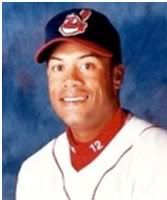

#8 Robbie Alomar vs #9 Sandy Alomar, Jr.
AC: This is not the first time Sandy Jr. and Lil' Robbie have been compared to one another. In fact, it pretty much defined their lives until their mid twenties, when Roberto finally pulled ahead in the competition for good by winning a couple titles in Toronto and breaking various long standing records for second basemen. Sandy certainly chose the tougher road as a 6'5" catcher, and were it not for his back problems and that troublesome split webbing between his fingers (has anyone else ever been on the DL for split webbing?), he might have given his little bro more of a run for his money. In the end, nobody can take away Sandy's two defining seasons: his 1990 Rookie of the Year campaign that legitimized the Joe Carter deal, and his startling 1997 season in which he could do no wrong (a 30 game hitting streak, .324 average, All-Star MVP, plus 5 HRs and 19 RBIs in the '97 postseason!!). Combine that with his long tenure in Cleveland and it's no surprise that Sandy is handily winning the vote right now. Still, a lot of people seem to have forgotten the incredible numbers Roberto put up here in Cleveland. 1999: .323/24/120. 2000: .310/19/89. 2001: .336/20/100. He also won 3 gold gloves here and finished third in MVP voting in 1999 and fourth in 2001. On a team with Kenny Lofton, Jim Thome, and Manny Ramirez, Roberto Alomar was the best all-around player on the field. I think that at least ought to put him in consideration here.
JE: Yes, it's our bracket's own mini Civil War: brother against brother in a battle of Alomars. Both Sandy and Roberto were outstanding defenders at premium positions (catcher and second base) and both also offered offensive output well above league averages for those positions. Robbie came to Cleveland in 1999 (some say he'd have been here sooner if Carlos Baerga has been willing to move to third base) and he went on to have three of the best seasons of his great career. Not only could he do it all with his bat, but the double play combo of Alomar and Vizquel (along with Travis Fryman's sterling work at third) produced perhaps the finest defensive infield any of us have seen. Sadly, the team's playoff luck sputtered, and Robbie was shipped off just before his career abruptly tanked. Big brother Sandy, on the other hand, was an Indian for over a decade, and one of the most popular players on the club for many of them. Starting off as a gold glover and the first rookie catcher to start an All-Star Game, he might have become one of the Tribe's all-time greats if not for the constant injury problems. But the fact is, from the ages of 25-29, Sandy failed to play in more than 89 games for a season, and during his full 11 years in Cleveland, he only played in 100 games four times! While we all remember Sandy's great '97 season and his role on those great ‘90s teams, I'm actually inclined to side with Andy and vote for Robbie in this one, as his three seasons here eclipse his brother's two best healthy seasons. I love Sandy, but he might be one of the most overrated Indians of the last 20 years.
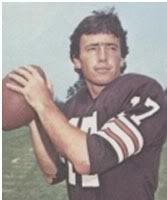

#4 Brian Sipe vs #13 Joe Charboneau
AC: In 1980, two men stood above all others in Cleveland sports. They were young, charismatic, and for one calendar year, they looked like world-beaters. Back then, this might have made for a pretty intriguing debate: the franchise quarterback Brian Sipe against the slugging rookie "Super Joe" Charboneau. Which guy might lead Cleveland out of its championship deep freeze? The answer wound up being neither, of course. But as the voters are already correctly recognizing, there can be zero debate about who had the superior career playing by the lake. Charboneau, while perhaps one of the city's top four sports characters of all time, is far, far away from Sipe's class as a ballplayer. Joe flamed out after one good season. Sipe, for all the focus on Red Right 88 and the Kardiac Kids' brief run, is still the all-time leading passer in Browns history-- more yards than Otto Graham, Frank Ryan, and the mighty Bernie. He spent 10 years in Cleveland, and his 1980 MVP season (4,132 yards, 30 TDs) remains one of the best by a Cleveland athlete, period.
JE: There's no denying Super Joe's amazing Rookie of the Year campaign, which looks even more amazing when you consider he missed the final 6 weeks of the season with a pelvic injury and had been stabbed by a crazed fan before the season had even begun. He looked like a can't-miss player, but wound up a one-hit wonder, probably due in large part to a chronic back problem. Charboneau was out of baseball just 3 years after making his splash. Even if he hadn't had that one great year, though, he might still have been remembered for opening beer bottles with his eye socket, dying his hair, or drinking beer via a straw up his nose. He was always entertaining and he gave Indians fans something to care about in 1980 (a song about him even reached #3 on the local top 100). On the other end, Brian Sipe was a classic "come from nowhere" story in his own right-- a 13th round pick whose first 2 years in the league were spent on the reserve squad. After winning and losing the starting QB job on a few separate occasions, he persevered and finally took over the spot longterm in 1978. I am not sure any other eventual NFL MVP had a more arduous track through the NFL (Kurt Warner's bag boy story aside, maybe). Sipe was the heart and soul of those Kardiac Kids squads, but he really only had 2 years where he ranked among the league's elite. Still, 2 is better than 1, so Brian takes this one.


#5 Brad Daugherty vs #12 Zydrunas Ilgauskas
JE: While one great Cleveland center had his career cut short by injuries, another got a late start because of them. Zydrunas Ilgauskas could always shoot the 15-footer and pass better than just about any center in the league, and without his numerous foot surgeries, he might have become one of the elite NBA big men of the past decade (he still ranks pretty high anyway, thanks to diminishing talent at the position). The question is, if healthy, would Z have been better than Brad Daugherty? Daugherty was the main weapon on the great Cavs teams of the late ‘80s and early ‘90s. He would become the Cavs all-time leading scorer, even though he only played 8 years in the NBA, and 2 of those years he barely played in half the games due to injury. Brad retired at just 28 years of age, thanks to back problems that had affected him throughout his career. In a truly tragic turn of events, the last time he wore a Cavs jersey was for the filming of the Whoopie Goldberg movie Eddie, a sad way to end a career if I ever saw one. So in the end we have the center that had to retire way too young and the center who missed his youth. As much as I love Z, it's hard to overlook a guy who was this team's leading scorer till a certain LBJ came along. I go Big Brad.
AC: One wrinkle I would add to this is, which player was more valuable to his respective team? It hardly solves the debate, but it's worth considering. The early ‘90s Cavs certainly were accustomed to playing without Daugherty, and they had Larry Nance and Hot Rod Williams to pick up some of the slack, along with the scoring of Mark Price on the perimeter. Before LeBron arrived, Zydrunas basically made or broke a Cavs season depending on if his feet made it or broke. It's impossible not to feel a lot of love for Z, considering everything he's overcome and his status as the sole carryover from the Mike Fratello era. As Jeff correctly states, Daugherty's numbers don't lie, and the voters seem to agree. But Big Z's ability to overcome his injuries and enjoy a long successful career has made him just as significant in Cavs history as that Richard Petty-loving big man out of Carolina.


#3 Sam McDowell vs #14 Reggie Rucker
AC: In the course of trying to pair up 64 players into tidy, clever little matchups, there are bound to be a few clashes that only have their randomness to rely on for a back-story. In other words, it's only through our shared experience of watching Cleveland sports that we might come to this absurd scenario of comparing 1960s fireballer "Sudden" Sam McDowell to 1970s pass catcher Reggie Rucker. The latter was a very consistent performer for the Browns across seven seasons, and still ranks 7th in team history in receiving yards and 8th in receptions. The former is one of the top pitchers in Indians history, making 6 All-Star teams between 1965 and 1971, including a 20 win season in 1970 and a dazzling 1.81 ERA in 1968. Rucker never dominated cornerbacks like McDowell dominated AL hitters, so this one is a no-brainer.
JE: Yeah, this is one of the least exciting matchups on paper. There isn't a fun connection with the players, unless you count the Indians hiring Reggie Rucker as a color commentator in the 1980s. Yes, for the very young, you read that right--- a former Browns wide receiver was hired as an announcer for the Cleveland Indians. It's a wonder that Rick Manning wasn't doing Cavs games. Anyway, Rucker eventually switched back to football and has been doing that to his day. As for Sam McDowell, he was a 6"5" lefty with sick stuff. To give you an idea how highly he was thought of, the Indians signed a then 18 year-old Sudden Sam to a six-figure deal in 1960, and a year later, he was in the Bigs. He stayed in Cleveland for 10 seasons before he was traded for Frank Duffy and Gaylord Perry (also in this tournament). McDowell retired in 1975 with a career strikeout rate of 8.86 per nine innings, a mark matched only by Nolan Ryan and Sandy Koufax at the time. If Sam's dominance isn't enough to win this match up, how about the fact that his post-baseball alcoholism and eventual recovery were the basis for the character Sam Malone on Cheers? See ya round, Reggie.

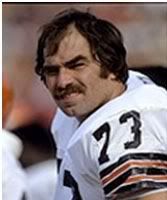
#6 Dick Schafrath vs #11 Doug Dieken
JE: I have to be honest; this is one of my favorite matchups in the whole tournament. When Doug Dieken became the starting LT for the Browns, he was only the third man to play the position in team history, and he replaced one Dick Schafrath. Dieken was actually a TE at Illinois, but he converted to tackle in Cleveland, and impressed his coaches enough to take over for the retiring 7-time Pro Bowler in 1971. Doug continued the team's legacy at LT, playing 14 years for the team and making a Pro Bowl in 1980. On retiring, he became a color analyst for Browns broadcasts, which is how a new generation has come to know him. The thing is, I think Schafrath should not only win this, but I think you could make a strong case that he is a Hall of Fame snub, as well. Along with his 7 Pro Bowl appearances, "The Mule" was named to 4 All Pro Teams, and opened holes for legends Brown, Mitchell, and Kelly. Much like Dieken, he did not take a direct route to the LT position. As a member of the 1957 National Champion OSU Buckeyes, Schafrath actually played a lot of defensive end. His play at DE even preserved a win against Michigan in 1958. The Browns took him late in round 2 even though he only weighed 220 lbs, because Paul Brown saw something he liked. Schafrath was put on a weight lifting regiment and started competitive eating, and by the end of his first year, he was 270 pounds and the Browns new LT. After his retirement, he went ahead and became a state senator to boot, and he also wrestles bears. So, with apologies to Doug Dieken and his fans, this really shouldn't be close.
AC: The funny thing is, the voting isn't close as of now. But it's actually a landslide for Doug Dieken, which is a good indicator that generation gaps could become a major factor in this tournament. Whether it's fans who remember the ‘70s better than the ‘60s, or even younger fans who grew up listening to Dieken on the radio, he has the name recognition that Schafrath apparently lacks. Perhaps that long awaited phone call from Canton is what The Mule needs to remind Browns fans of just how great he was blocking for and against numerous Hall of Famers in the NFL's golden age.
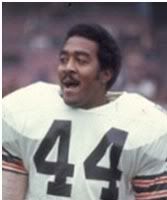
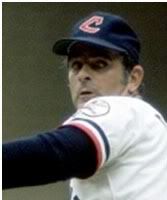
#7 Leroy Kelly vs #10 Gaylord Perry
AC: One man who could certainly vouch for Dick Schafrath is Leroy Kelly, who ran behind The Mule and the rest of the vaunted Browns offensive line en route to becoming the last of the Browns Hall of Fame running backs. Considering that Gaylord Perry only played three seasons in Cleveland on his whirlwind tour around the Majors, this would seem to be an easy win for Leroy. However, Hall of Famer though he may be, Kelly was only a truly elite NFL rusher for 3 seasons. Prior to that, he was Jim Brown's apprentice, and in his later years, he simply lost a step-failing to rush for 1,000 yards or average more than 3.7 yards per carry. Between 1966 and 1968, though, he was very tough to tackle, averaging better than 1,200 yards and 5 yards per carry. Still, Gaylord Perry's 3 full seasons as an Indian are almost equally impressive: averaging about 21 wins, 230 K's, and an ERA around 2.50. Not to mention 86 complete games in 3 years!! Still think this is an easy choice?
JE: This is the only Hall of Famer vs. Hall of Famer matchup in Round 1, as we've got the self-admitted cheater against the man who had to replace a living legend. Gaylord certainly left his mark here. That first year in Cleveland (1972), he won 24 games and had an ERA under 2. For 35 years, he would be the Indians only Cy Young winner (until CC Sabathia) and their last 20-game winner (until Cliff Lee). Sadly though, Gaylord and Frank Robinson didn't really get along, so the Tribe traded him for three pitchers (Jim Bibby, Jackie Brown, and Rick Waits) whose combined win totals are still 80 shy of Perry's. Meanwhile, Leroy Kelly had to replace the seemingly irreplaceable Jim Brown. In 1964, Kelly's main role on Cleveland's last championship team was a return man. I can't imagine that Kelly thought, when he came to Cleveland as a lowly 8th round pick, that a year later he would have to replace the NFL's all time rusher. Instead of letting the pressure get to him, though, he went on to have a Hall of Fame career of his own-making 6 Pro Bowls and 5 All Pro teams. Since he also got into the Hall without the assistance of any Vaseline or spitballs, I've got to go with Kelly over Perry.
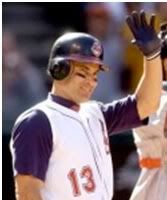

#2 Omar Vizquel vs #15 Carlos Baerga
JE: As second basemen, only Carlos Baerga and Rogers Hornsby have ever hit .300, had 20 HRs, 200 hits, and 100 RBIs in a season. Carlos did it twice. That is pretty elite company for a #15 seed, but we all know it didn't last long for Baerga. Even though he is always thought of as a big part of the great Indians teams of the ‘90s, he only played in one postseason (1995). Also, Baerga's best years were actually at Municipal Stadium and not at the Jake. That brings us to his double play partner, the ever-popular Omar Vizquel. Why is he so loved? Well, for one thing, he didn't bolt for cash like most of the other players on those ‘90s teams. We Cleveland fans have a bit of an abandonment complex, so Omar hanging around for 11 years meant a lot. His defense at shortstop was masterful, of course, and he gradually turned into a darn good hitter too, but it was his presence as the face of the franchise post-Thome and Ramirez that solidified Cleveland's love for the guy. I'm not insinuating that Vizquel was overrated as a ballplayer, but there are certainly some ways that Baerga could be seen as the more valuable contributor during his time here. Even so, thanks to Baerga's sudden flame out, it's hard to argue against the best defensive SS of the ‘90s, so I cast my vote for O over Carlos and his Pronk-like career path.
AC: I was going to take some time to point out just how good Baerga was in the early ‘90s, but Jeff mostly covered that. Instead, let's erase any doubt here. Omar Vizquel is NOT an overrated player-in Cleveland or anywhere else. Because defense is so criminally underappreciated, he is still considered a borderline Hall of Famer, but anyone who's seen him play (and it doesn't matter if you found him charming and adorable like my mom did) can attest to his incredible ability as an all-around baseball player. Vizquel won 8 Gold Gloves as an Indian and played in three All-Star games during a time when the AL had the finest crop of shortstops in league history. He routinely stole more than 30 bases and was an invaluable #2 hitter in the order-- sacrificing, bunting for hits, putting the ball where it needed to be. As part of a sadly forgotten 1999 juggernaut, he hit .333 and stole 42 bases. He even hit 14 homers and drove in 72 runs in 2002, and was still a .290 hitter in his final season with the Tribe in 2004. Even if we just look at him as a .273 career hitter, though, Vizquel should be a first ballot Hall of Famer. In the modern era, nobody played the game's marquee position better than he did-- not Ozzie Smith... not even Jhonny Peralta.
We'll be back soon to break down the next regional as we slowly move through the first round on the way to determining the top players of the title drought era. To cast your first round votes (if you haven't already), go to the bracket matchups here: 64 Since 64.
- NBA Announces 2013-2014 Schedule
- Browns Ink Sharknado
- Sharknado A No-Show For Rookie Camp
- Trent Richardson Out Until Training Camp
- Browns Sign Brandon Jackson
- Carrasco Suspended Eight Games
- Browns Add to Wide Receiver Depth with David Nelson
- Browns Need to Learn from Past Draft Mistakes
- Browns Release Chris Gocong and Usama Young
- Browns Missing on Grimes Disappointing, But Not The End
The TCF Forums
- Movies coming out
rebelwithoutaclue (Tuesday, January 21 2014 12:56 PM) - 2015 Recruiting
jclvd_23 (Tuesday, January 21 2014 12:38 PM) - The 2014 Offseason Thread
Larvell Blanks (Tuesday, January 21 2014 12:25 PM) - Official- Browns Coach Search/Rumors
Larvell Blanks (Tuesday, January 21 2014 11:53 AM) - Chris Grant's first 3 drafts
Kingpin74 (Tuesday, January 21 2014 10:13 AM) - Mike Brown
YahooFanChicago (Monday, January 20 2014 11:15 PM) - 2014 Hoops Hockey Hijinx
jpd1224 (Monday, January 20 2014 4:44 PM) - 2014 Recruiting
jclvd_23 (Monday, January 20 2014 2:26 PM) - Wish List - #4 Pick
Hikohadon (Monday, January 20 2014 1:26 PM) - #1 overall pick Anthony Bennett
TouchEmAllTime (Sunday, January 19 2014 1:28 PM)


